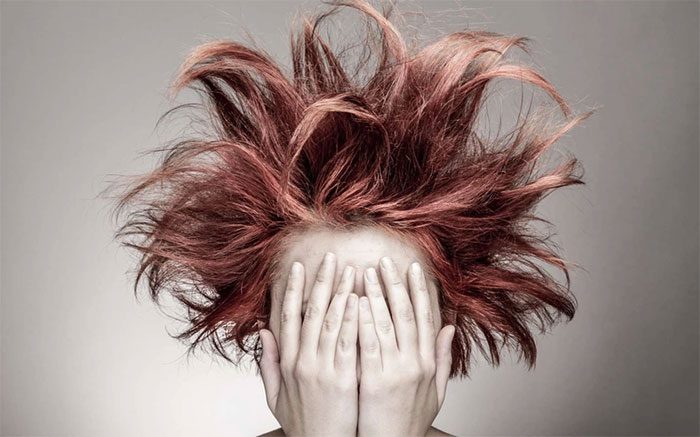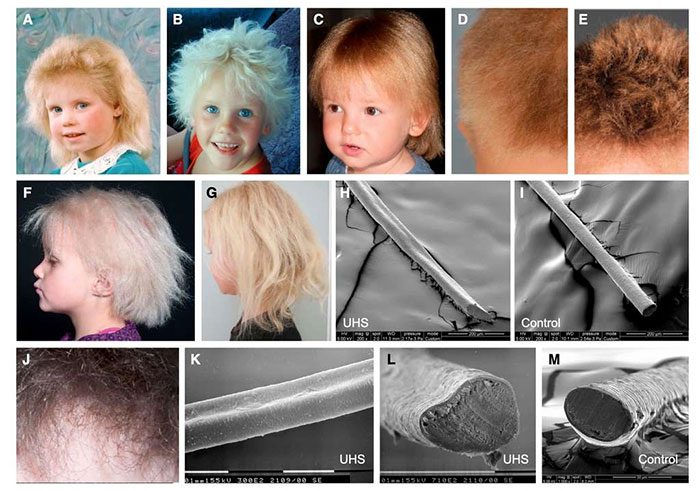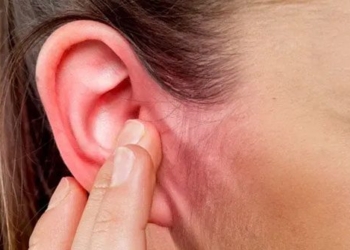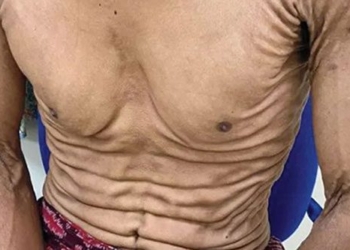This syndrome causes hair to stand upright, become dry and thick, and be impossible to comb; surprisingly, it disappears as a person matures.
In 1978, a 2-year-old Ashkenazi Jewish boy became the center of attention for pediatricians at a hospital in Tel Aviv, Israel. His uniquely special hair piqued the doctors’ curiosity, as the child was otherwise completely normal.

Currently, there is no specific treatment for uncombable hair syndrome; patients need patience until adulthood for their hair to return to normal (Image: Futura Sciences).
Specifically, the boy’s hair was a light blonde with a strange shine, dry and thick, full of frizz, and simply impossible to comb. Doctors analyzed the Ashkenazi boy’s hair using an electron microscope to visualize its structure.
The results showed that the hair was cross-sectioned by one or two longitudinal grooves, altering their shape. Instead of being round or oval, they were triangular or bean-shaped.
At the same time, across the Mediterranean, French doctor André Dupré and his colleagues made similar observations. A family with three children all possessed “unyielding” hair.
The mother and father stated that they had similar hair before it disappeared for many years. This led doctors to name this peculiar condition for the first time: Uncombable Hair Syndrome (UHS).
Uncombable Hair Syndrome (UHS) is a rare hair structure abnormality with varying degrees of impact, often clearly observed in children aged 3 to 12 years. Affected children will have dry, curly, frizzy hair that is difficult to comb, with each strand puffed up like a rambutan. Due to this characteristic, UHS is also known as “rambutan hair.”

Children with uncombable hair syndrome will return to normal as they mature. (Image: American Journal of Genetics).
At the time this condition was first named, its origin was not well understood, but the fact that entire families were affected provided doctors with clues. After research, experts suggested that uncombable hair syndrome originates from a gene.
In 2016, German researchers conducted a genetic study on 11 patients with “rebellious” hair. The first family involved in the study was British, with two children having normal hair and two others affected by uncombable hair syndrome.
Analysis of the patients’ genes, specifically the PAD13 gene located on chromosome 1, highlighted a nonsense mutation in the gene, which appeared in both versions of the gene.
Genetic analysis of other patients confirmed that the mutation in PAD13 is indeed the cause of uncombable hair syndrome, along with mutations in TGM3 and TCHH.
These three genes encode homologous proteins: PAD13 and TGM3 are enzymes, while TCHH is a structural protein targeted by the first two genes. All three are involved in the formation of hair fibers.
This syndrome only affects the hair shaft without impacting the number of hair strands, nor does it disrupt the structure or appearance of hair in other parts of the body.
Children may start showing signs of UHS if both parents carry the mutated gene, even if the parents themselves do not have the syndrome.
Since the condition resolves in adulthood, most patients with this syndrome are typically aged between 3 months and 12 years. It does not cause any other health issues, so there is no treatment.
UHS does not harm the overall health of children, except that their parents cannot comb their hair straight. Currently, scientists have not found a cure for this syndrome; the only solution is to braid the hair and use softening hair products to maintain a straight style.
The best remedy for this peculiar condition is patience, as there is no specific treatment, and patients must wait until adulthood for the stiff, uncombable hair phenomenon to disappear and return to normal.





















































